-
 Bitcoin
Bitcoin $105,734.0170
-1.51% -
 Ethereum
Ethereum $2,414.7328
-3.26% -
 Tether USDt
Tether USDt $1.0002
0.00% -
 XRP
XRP $2.1748
-2.62% -
 BNB
BNB $647.5663
-1.72% -
 Solana
Solana $148.1710
-3.81% -
 USDC
USDC $0.9999
-0.01% -
 TRON
TRON $0.2799
-0.02% -
 Dogecoin
Dogecoin $0.1586
-4.17% -
 Cardano
Cardano $0.5440
-5.03% -
 Hyperliquid
Hyperliquid $37.0680
-6.59% -
 Bitcoin Cash
Bitcoin Cash $501.2052
-4.01% -
 Sui
Sui $2.6846
-3.47% -
 Chainlink
Chainlink $12.8488
-3.38% -
 UNUS SED LEO
UNUS SED LEO $8.9480
-1.51% -
 Avalanche
Avalanche $17.2059
-3.87% -
 Stellar
Stellar $0.2270
-4.75% -
 Toncoin
Toncoin $2.7889
-3.93% -
 Shiba Inu
Shiba Inu $0.0...01126
-1.76% -
 Litecoin
Litecoin $83.6893
-3.36% -
 Hedera
Hedera $0.1445
-4.49% -
 Monero
Monero $312.4014
-2.58% -
 Dai
Dai $1.0000
0.00% -
 Ethena USDe
Ethena USDe $1.0001
-0.01% -
 Polkadot
Polkadot $3.2920
-3.32% -
 Bitget Token
Bitget Token $4.4629
-1.81% -
 Uniswap
Uniswap $6.5386
-8.42% -
 Aave
Aave $260.3780
-6.01% -
 Pepe
Pepe $0.0...09308
-4.54% -
 Pi
Pi $0.4864
-3.04%
How to set up a stop-loss order on Kraken
Learn to set up a stop-loss order on Kraken to manage risk effectively: log in, select your trading pair, and submit your order to protect your crypto investments.
Apr 07, 2025 at 08:14 am

Setting up a stop-loss order on Kraken is an essential skill for any cryptocurrency trader looking to manage risk effectively. A stop-loss order is an order placed with a broker to buy or sell a specific asset once it reaches a certain price. This tool helps traders limit their losses by automatically selling an asset when its price falls to a predetermined level. Kraken, being one of the leading cryptocurrency exchanges, offers this feature to its users. In this guide, we will walk you through the steps to set up a stop-loss order on Kraken, ensuring you can protect your investments from significant downturns.
Understanding Stop-Loss Orders
Before diving into the setup process, it's important to understand what a stop-loss order is and how it works. A stop-loss order is designed to limit an investor's loss on a position in a security. When the price of the asset reaches the stop price, the stop-loss order becomes a market order and is executed at the next available price. This means that the execution price may not be the same as the stop price, especially in volatile markets. On Kraken, you can set a stop-loss order for any cryptocurrency pair available on the platform.
Preparing to Set Up a Stop-Loss Order
To set up a stop-loss order on Kraken, you need to have an active account and some cryptocurrency in your wallet. Ensure that you are logged into your Kraken account and have the necessary funds available. It's also a good idea to have a clear understanding of the current market conditions and the price levels at which you want to set your stop-loss. This preparation will help you make informed decisions and set your stop-loss order effectively.
Steps to Set Up a Stop-Loss Order on Kraken
Setting up a stop-loss order on Kraken involves a few straightforward steps. Here's how you can do it:
- Log into your Kraken account: Navigate to the Kraken website and enter your login credentials.
- Go to the trading page: Once logged in, click on the "Trade" tab at the top of the page.
- Select the trading pair: Choose the cryptocurrency pair for which you want to set the stop-loss order.
- Open the order form: Click on the "New Order" button to open the order form.
- Choose the order type: From the dropdown menu, select "Stop-Loss" as the order type.
- Set the stop price: Enter the price at which you want the stop-loss order to be triggered.
- Set the amount: Specify the amount of cryptocurrency you want to sell when the stop price is reached.
- Review and submit: Double-check all the details, then click "Submit Order" to place your stop-loss order.
Monitoring Your Stop-Loss Order
After setting up your stop-loss order, it's crucial to monitor it regularly. Market conditions can change rapidly, and you may need to adjust your stop-loss order accordingly. Kraken provides a user-friendly interface where you can view all your active orders, including stop-loss orders. You can access this by going to the "Open Orders" section on the trading page. Here, you can see the status of your stop-loss order and make any necessary adjustments or cancellations.
Adjusting or Canceling a Stop-Loss Order
If market conditions change or you decide to adjust your risk management strategy, you may need to modify or cancel your stop-loss order. To do this on Kraken, follow these steps:
- Go to the "Open Orders" section: Navigate to the trading page and click on "Open Orders."
- Find your stop-loss order: Locate the stop-loss order you want to adjust or cancel.
- Modify the order: If you want to change the stop price or the amount, click on the "Edit" button next to the order. Make the necessary changes and submit.
- Cancel the order: If you want to cancel the order entirely, click on the "Cancel" button next to the order.
Common Mistakes to Avoid
When setting up a stop-loss order on Kraken, there are several common mistakes that traders should avoid. These include:
- Setting the stop price too close to the current market price: This can result in the order being triggered by normal market fluctuations rather than significant downturns.
- Not adjusting the stop-loss order: Failing to adjust the stop-loss order as the market moves can lead to unnecessary losses.
- Ignoring transaction fees: Remember that transaction fees can affect the net proceeds from your stop-loss order.
- Over-reliance on stop-loss orders: While stop-loss orders are useful, they should not be the sole risk management tool. Consider using other strategies in conjunction with stop-loss orders.
Benefits of Using Stop-Loss Orders on Kraken
Using stop-loss orders on Kraken offers several benefits for cryptocurrency traders. These include:
- Risk management: Stop-loss orders help you manage risk by limiting potential losses.
- Automation: They allow for automated trading, freeing you from constantly monitoring the market.
- Peace of mind: Knowing that you have a safety net in place can reduce stress and improve your trading experience.
- Flexibility: Kraken's platform allows you to easily adjust or cancel stop-loss orders as needed.
Advanced Strategies with Stop-Loss Orders
For more experienced traders, stop-loss orders can be part of more advanced trading strategies. Here are a few examples:
- Trailing stop-loss orders: These orders adjust the stop price at a fixed percentage or dollar amount below the market price as it rises. This allows you to lock in profits while still protecting against downturns.
- Stop-loss with take-profit orders: Combining stop-loss orders with take-profit orders can help you manage both your potential losses and gains.
- Multiple stop-loss orders: Setting multiple stop-loss orders at different price levels can provide a more nuanced approach to risk management.
Technical Considerations
When setting up a stop-loss order on Kraken, there are some technical considerations to keep in mind. These include:
- Slippage: In highly volatile markets, the execution price of your stop-loss order may differ from the stop price due to slippage.
- Liquidity: The liquidity of the cryptocurrency pair you are trading can affect the execution of your stop-loss order. Less liquid pairs may experience more significant slippage.
- Order book dynamics: Understanding the order book can help you set more effective stop-loss orders. Monitor the order book to see where significant support and resistance levels are.
Real-World Examples
To illustrate how stop-loss orders work on Kraken, let's look at a couple of real-world examples:
- Example 1: You buy 1 BTC at $50,000 and set a stop-loss order at $48,000. If the price of BTC drops to $48,000, your stop-loss order will be triggered, and your BTC will be sold at the next available price, limiting your loss to approximately $2,000.
- Example 2: You buy 10 ETH at $2,000 each and set a stop-loss order at $1,900. If the price of ETH falls to $1,900, your stop-loss order will be triggered, and your ETH will be sold, limiting your loss to approximately $1,000.
Common Questions and Answers
Q: What is a stop-loss order?
A: A stop-loss order is an order placed with a broker to buy or sell a specific asset once it reaches a certain price. It is designed to limit an investor's loss on a position in a security.
Q: How do I set up a stop-loss order on Kraken?
A: To set up a stop-loss order on Kraken, log into your account, go to the trading page, select the trading pair, open the order form, choose "Stop-Loss" as the order type, set the stop price and amount, and submit the order.
Q: Can I adjust or cancel a stop-loss order on Kraken?
A: Yes, you can adjust or cancel a stop-loss order on Kraken. Go to the "Open Orders" section, find your stop-loss order, and click "Edit" to adjust or "Cancel" to cancel the order.
Q: What are the benefits of using stop-loss orders on Kraken?
A: The benefits include risk management, automation, peace of mind, and flexibility. Stop-loss orders help you limit potential losses and manage your investments more effectively.
Q: What are some common mistakes to avoid when setting up stop-loss orders?
A: Common mistakes include setting the stop price too close to the current market price, not adjusting the stop-loss order, ignoring transaction fees, and over-reliance on stop-loss orders.
Q: Can I use stop-loss orders as part of advanced trading strategies on Kraken?
A: Yes, stop-loss orders can be part of advanced strategies such as trailing stop-loss orders, stop-loss with take-profit orders, and setting multiple stop-loss orders at different price levels.
Q: What technical considerations should I keep in mind when setting up stop-loss orders on Kraken?
A: Technical considerations include slippage, liquidity, and order book dynamics. Understanding these factors can help you set more effective stop-loss orders.
Q: Can you provide real-world examples of stop-loss orders on Kraken?
A: Yes, for example, if you buy 1 BTC at $50,000 and set a stop-loss order at $48,000, your BTC will be sold if the price drops to $48,000, limiting your loss to approximately $2,000. Another example is buying 10 ETH at $2,000 each and setting a stop-loss order at $1,900, which will limit your loss to approximately $1,000 if the price falls to $1,900.
Disclaimer:info@kdj.com
The information provided is not trading advice. kdj.com does not assume any responsibility for any investments made based on the information provided in this article. Cryptocurrencies are highly volatile and it is highly recommended that you invest with caution after thorough research!
If you believe that the content used on this website infringes your copyright, please contact us immediately (info@kdj.com) and we will delete it promptly.
- Coinbase, Crypto, and Amazon: A New Era of Financial Integration
- 2025-07-02 12:30:12
- Binance, Airdrops, and Market Share: A 2025 Crypto Powerhouse
- 2025-07-02 12:30:12
- Crypto Trends 2025: MAGACOIN FINANCE Surges, Ethereum Mining Evolves, and XRP Payouts Innovate
- 2025-07-02 10:30:12
- Ethereum, MAGACOIN FINANCE, and Inflation: A Shift in Crypto Investor Focus
- 2025-07-02 10:30:12
- Kangaroos, Coin Purses, and a Hop Through Money History: You Gotta See This!
- 2025-07-02 10:50:15
- Arbitrum, Robinhood, and ARB Price: Is a Rebound on the Horizon?
- 2025-07-02 10:50:15
Related knowledge
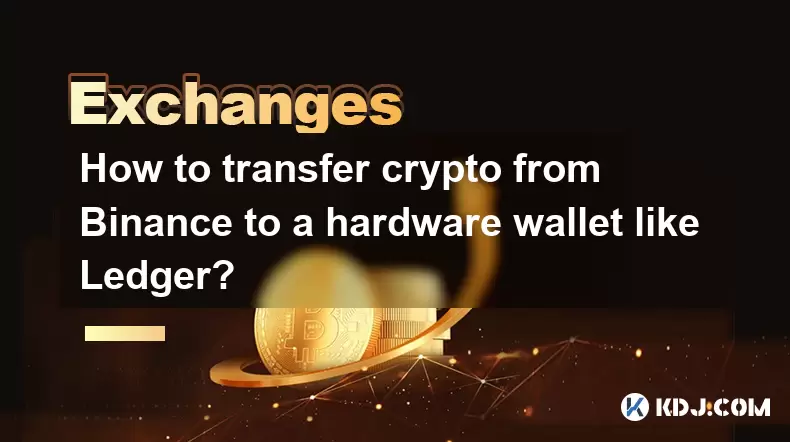
How to transfer crypto from Binance to a hardware wallet like Ledger?
Jul 02,2025 at 01:08pm
Why Transfer Crypto from Binance to a Hardware Wallet?Storing cryptocurrencies on centralized exchanges like Binance exposes users to potential risks such as hacking, exchange insolvency, or account breaches. For enhanced security, many users prefer transferring their assets to a hardware wallet, such as Ledger, which stores private keys offline and pro...
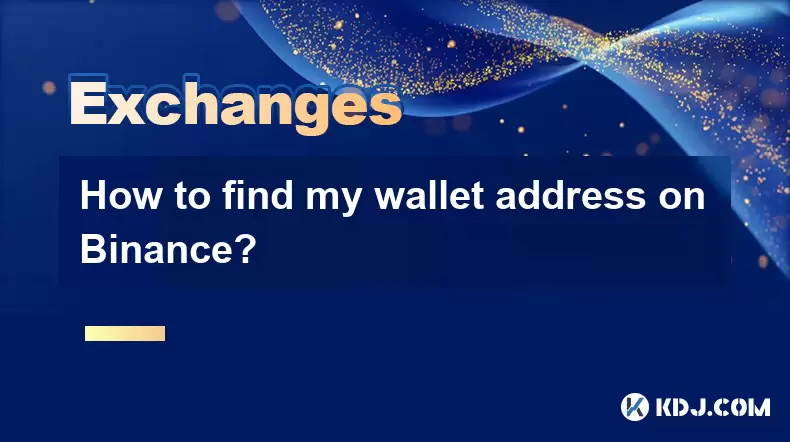
How to find my wallet address on Binance?
Jul 02,2025 at 12:56pm
How to Find Your Wallet Address on BinanceFinding your wallet address on Binance is a crucial step for managing your cryptocurrency assets. Whether you're looking to receive funds, verify transactions, or set up external wallets, knowing how to locate your wallet address ensures smooth and secure operations. Understanding What a Wallet Address IsA walle...
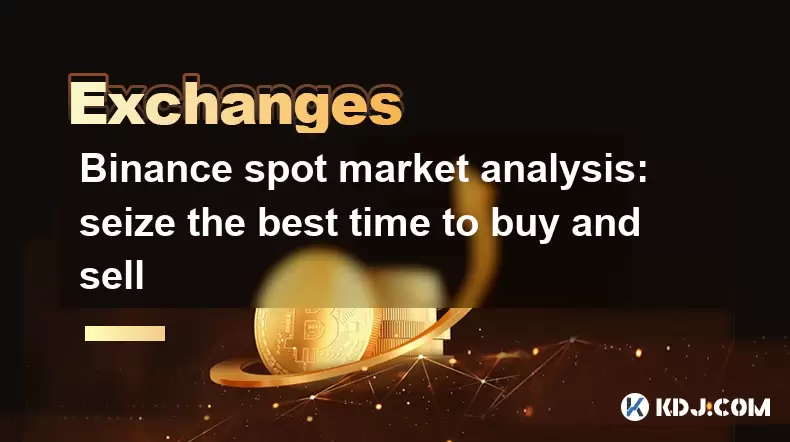
Binance spot market analysis: seize the best time to buy and sell
Jun 19,2025 at 04:56pm
Understanding the Binance Spot MarketThe Binance spot market is one of the most popular platforms for cryptocurrency trading globally. It allows users to trade digital assets at current market prices, making it essential for traders aiming to buy low and sell high. Unlike futures or margin trading, spot trading involves direct ownership of the asset aft...
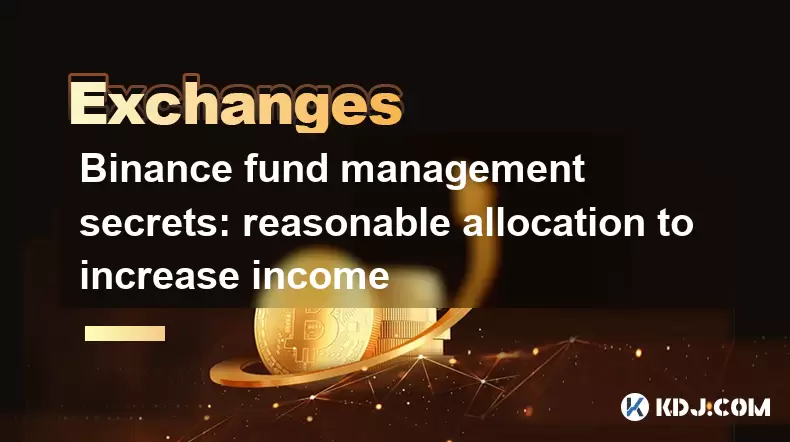
Binance fund management secrets: reasonable allocation to increase income
Jun 22,2025 at 02:29pm
Understanding Binance Fund ManagementBinance fund management involves strategic allocation of your cryptocurrency assets to optimize returns while managing risk. The key to successful fund management lies in understanding how different investment options on the Binance platform can be utilized to create a diversified portfolio. This includes spot tradin...
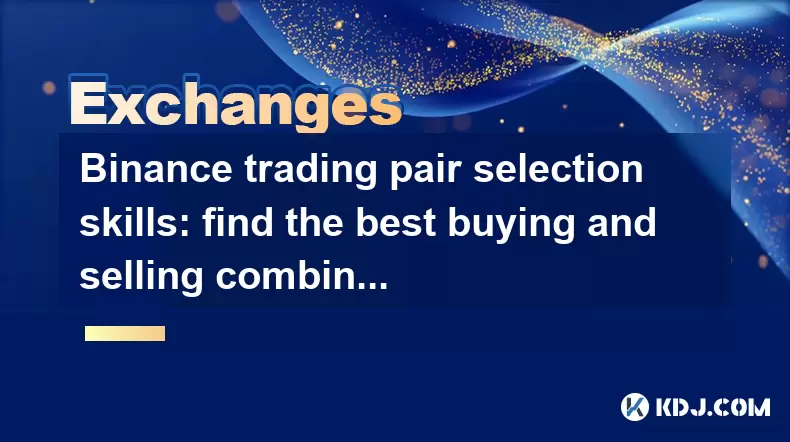
Binance trading pair selection skills: find the best buying and selling combination
Jun 23,2025 at 02:49am
Understanding the Basics of Trading Pairs on BinanceBefore diving into trading pair selection skills, it's essential to understand what a trading pair is. On Binance, a trading pair refers to two cryptocurrencies that can be traded against each other. For example, BTC/USDT means Bitcoin is being traded against Tether. Each trading pair has its own liqui...
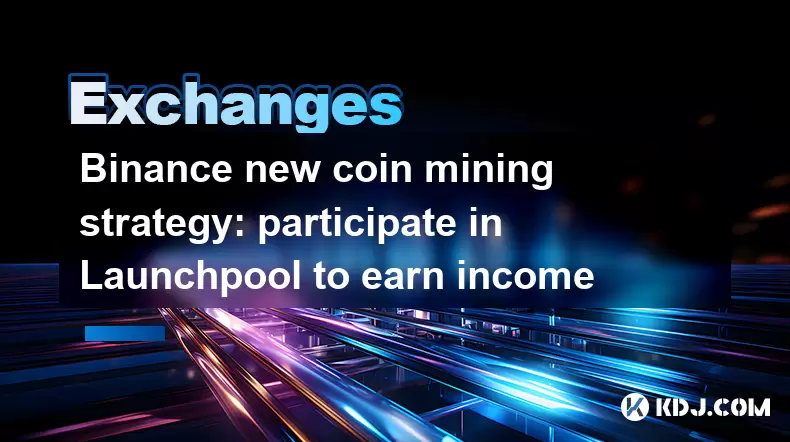
Binance new coin mining strategy: participate in Launchpool to earn income
Jun 23,2025 at 11:56am
What is Binance Launchpool and how does it work?Binance Launchpool is a feature introduced by the world’s largest cryptocurrency exchange, Binance, to allow users to earn new tokens through staking. This platform enables users to stake their existing cryptocurrencies (such as BNB, BUSD, or other supported assets) in exchange for newly launched tokens. T...

How to transfer crypto from Binance to a hardware wallet like Ledger?
Jul 02,2025 at 01:08pm
Why Transfer Crypto from Binance to a Hardware Wallet?Storing cryptocurrencies on centralized exchanges like Binance exposes users to potential risks such as hacking, exchange insolvency, or account breaches. For enhanced security, many users prefer transferring their assets to a hardware wallet, such as Ledger, which stores private keys offline and pro...

How to find my wallet address on Binance?
Jul 02,2025 at 12:56pm
How to Find Your Wallet Address on BinanceFinding your wallet address on Binance is a crucial step for managing your cryptocurrency assets. Whether you're looking to receive funds, verify transactions, or set up external wallets, knowing how to locate your wallet address ensures smooth and secure operations. Understanding What a Wallet Address IsA walle...

Binance spot market analysis: seize the best time to buy and sell
Jun 19,2025 at 04:56pm
Understanding the Binance Spot MarketThe Binance spot market is one of the most popular platforms for cryptocurrency trading globally. It allows users to trade digital assets at current market prices, making it essential for traders aiming to buy low and sell high. Unlike futures or margin trading, spot trading involves direct ownership of the asset aft...

Binance fund management secrets: reasonable allocation to increase income
Jun 22,2025 at 02:29pm
Understanding Binance Fund ManagementBinance fund management involves strategic allocation of your cryptocurrency assets to optimize returns while managing risk. The key to successful fund management lies in understanding how different investment options on the Binance platform can be utilized to create a diversified portfolio. This includes spot tradin...

Binance trading pair selection skills: find the best buying and selling combination
Jun 23,2025 at 02:49am
Understanding the Basics of Trading Pairs on BinanceBefore diving into trading pair selection skills, it's essential to understand what a trading pair is. On Binance, a trading pair refers to two cryptocurrencies that can be traded against each other. For example, BTC/USDT means Bitcoin is being traded against Tether. Each trading pair has its own liqui...

Binance new coin mining strategy: participate in Launchpool to earn income
Jun 23,2025 at 11:56am
What is Binance Launchpool and how does it work?Binance Launchpool is a feature introduced by the world’s largest cryptocurrency exchange, Binance, to allow users to earn new tokens through staking. This platform enables users to stake their existing cryptocurrencies (such as BNB, BUSD, or other supported assets) in exchange for newly launched tokens. T...
See all articles

























































































